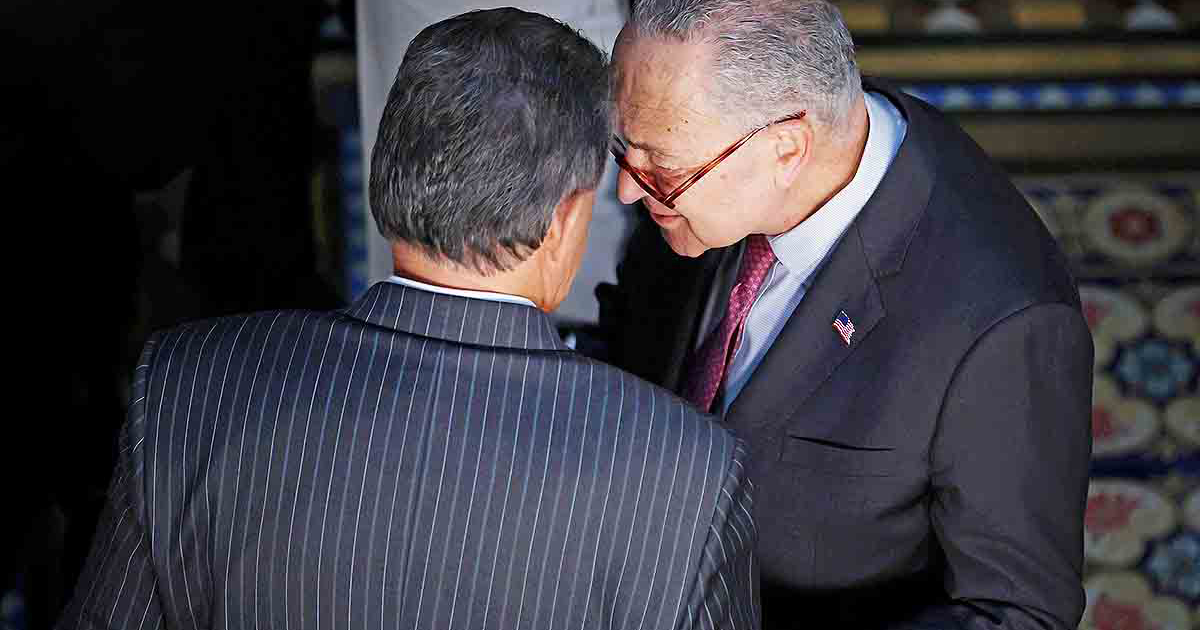
Inflation Reduction Act’s EV tax credit timeline
Note: The Inflation Reduction Act includes several tax credits related to electric vehicle sales. The credit for new EVs falls under Internal Revenue Code Section 30D and features more eligibility limitations and rules. The used EV credit is under section 25E, and the commercial clean vehicle credit is under section 45W.
2022
July 27: U.S. Democratic Sens. Chuck Schumer of New York and Joe Manchin of West Virginia reach an agreement on a landmark health, climate and tax bill — now known as the Inflation Reduction Act — that includes a revamped system of federal tax credits for new and used electric vehicles.
Aug. 16: President Joe Biden signs the Inflation Reduction Act into law, triggering a shift from the old $7,500 tax credit for consumers purchasing new EVs to a more complicated one designed to incentivize domestic EV production, reduce reliance on foreign supply chains and prevent wealthy buyers from getting a discount. As of the bill’s signing, eligible EVs must be assembled in North America.
Dec. 19: The U.S. Treasury Department says it will miss its statutory Dec. 31 deadline for issuing proposed guidance on the critical mineral and battery component requirements that apply to new EVs under the 30D credit, effectively delaying those eligibility restrictions until after the guidance is issued. The department says it will issue the guidance — and a proposed rulemaking that further clarifies key provisions such as price caps and how vehicles are classified — in March.
Dec. 29: Treasury and the IRS release preliminary information on the tax credits for new (30D), used (25E) and commercial clean vehicles (45W). The documents include an FAQ, an updated list of potentially eligible EVs and a notice on the expected content of the forthcoming proposed guidance for the EV battery sourcing. Treasury also more directly states that EVs leased by consumers could qualify for the commercial credit, which is not subject to the same eligibility restrictions as the tax credit for consumers buying new EVs (30D).
2023
Jan. 1: The prior tax credit’s 200,000-unit-per-automaker sales cap is eliminated for vehicles sold on or after Jan. 1, allowing EVs produced by Tesla and General Motors to potentially qualify again. New restrictions on sticker price and buyer income take effect under the 30D credit. The used and commercial credits may be applied to vehicles acquired as of Jan. 1.
Jan. 25: Manchin introduces legislation — called the American Vehicle Security Act — that would amend the Inflation Reduction Act’s consumer tax credit for new EVs so that the effective date of the required battery sourcing is no longer tied to Treasury’s release of proposed guidance on the restrictions. If enacted, no credit would be available for any new EV that does not meet the increasingly stringent critical mineral and battery component requirements, effective retroactively as of Jan. 1. The Inflation Reduction Act’s commercial clean vehicle and used EV incentives are not subject to the sourcing rules and are unaffected by Manchin’s bill.
Feb. 3: Treasury modifies how it is classifying vehicles that are subject to price caps in the Inflation Reduction Act’s 30D tax credit, which limits the suggested retail price to no more than $80,000 for new pickups, SUVs and vans, and to no more than $55,000 for other vehicles such as sedans. The department, facing pushback from automakers such as GM and Tesla, says it will now use the consumer-facing EPA Fuel Economy Label standard to determine whether a vehicle is a sedan, SUV, pickup or van.
March 31: Treasury releases its much-anticipated proposed guidance on the tax credit’s increasingly stringent critical mineral and battery sourcing rules. Those eligibility requirements will go into effect for EVs placed in service — meaning the date the customer takes delivery of the vehicle — on or after April 18.
April 17: Treasury releases an updated list of qualifying vehicles and the credit amount each may receive at fueleconomy.gov.